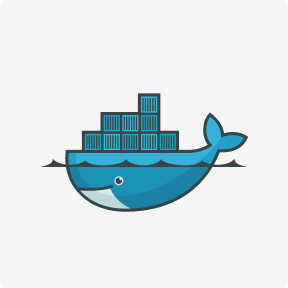Startups should consider outstaffing as soon as possible when they need to scale quickly and efficiently, especially during periods of rapid growth. When outsourcing functions that involve sensitive data or proprietary information, data security and confidentiality become major concerns. Sharing confidential information with external parties increases the risk of data breaches, intellectual property theft, or unauthorized access. Companies must establish robust data protection measures, contractual agreements, and security protocols to safeguard their sensitive information. Since graphic designers have to work on their own time and don’t get paid unless you approve their work, it can take them longer than expected to deliver the finished product. This can cause a lot of stress for both parties involved if deadlines need to be met.

Increasingly, companies are turning to outside vendors both at home and abroad. • When outsourcing, the contractor or staff is usually subcontracted. In the case of outstaffing, the staff is registered with the contractor company, which searches for employees and ensures their sufficient skill level.
How it helps businesses during Covid-19?
When AxisPoint could not find enough local engineers in their home state of Kentucky, they reached out to ProCoders for help. ProCoders answered the call with an IT Staff Augmentation Services proposal that allowed the CTO management team at AxisPoint to manage the programmers ProCoders provided directly. • Usually in IT outstaffing, the staff is more qualified, and therefore they’re paid every month (or every two weeks), not from the client company but their agency.

Whether individuals or companies, they can choose from many and varied areas of expertise. This is certainly based on what the project or operation calls for. For instance, if you want to develop a simple app, you wouldn’t choose an individual or company with 10+ years of expertise. Instead, you’d have other choices with a suitable set of skills and experience. Outstaffing vs. outsourcing, what works best for your company depends upon its resources, hiring requirements, and project needs. For instance, if you don’t have technical expertise available, you can depend upon outsourcing.
Do you have resources for management?
If you need to execute the project on a turnkey basis and do not have specialists to solve this problem, it will be much easier to hire an outsourcing agency. The idea of an outsourcing agency is to finish the customers’ project fast and efficiently. Now that we have identified the pros and cons of each model, it is time to explore the best one for your company. The global IT industry grows rapidly and is expected to reach an enormous size of $410 billion by 2027. In most cases, you will only interact with a project manager from the outsourcing team, whom you’ll provide your deadlines, updates, and requests.
Best IT outsourcing strategies for businesses – Appinventiv
Best IT outsourcing strategies for businesses.
Posted: Thu, 04 Aug 2022 13:36:57 GMT [source]
We’ve talked about the pros and cons of outstaffing, and now it’s time to wrap things up. However, it can also be detrimental as outsourcing companies are often not as qualified or experienced as the company doing the outsourcing. This can lead to issues with quality and efficiency, which can ultimately cost a business more money than if they had simply hired additional staff.
Outstaffing work model
Many major organizations rely on outsourcing in fields like human resources, marketing, and app development. Outstaffing is a type of offshore software development in which a client hires a contractor from a software outsourcing company to carry out development tasks. outstaffing company The outsourcing model involves hiring a mobile app development company to carry out a project from the early stages to launch. You, as a customer, are not involved in day-to-day problems and cooperate with the third party’s project manager to make important decisions.
We offer flexible setups, giving clients full control of the direction of their projects. Full Scale provides all the experts, from software engineers to project managers and QA specialists. While outsourcing may be a more cost-effective option in the short term, it’s likely not going to last forever. As your business grows and more employees are added to your payroll, you will need to hire a full-time team.
A Few Tips for Outsourcing or Outstaffing Team Hiring
Therefore, you know for sure that your project is given their full attention. Because of the resources spent on management and supervision, an outsourcing client does not only pay for the tech
team. They also pay for the time and effort of the management team, which can significantly increase the costs of
the service compared to outstaffing.
- When going to rationalize task distribution, tech leaders consider various strategies to optimize their operations.
- Moreover, the signed contract guarantees the security of your data.
- They hire a team of programmers (or at least one programmer) and experiment with goals and projects, paying the specialists an hourly rate.
- This can help with productivity and communication among employees while also providing better customer service since everyone is working together towards a common goal.
- After you find your client, it’s time for our Customer Success department to hold the reigns.
- Suppose your company is not too technology-oriented and you do not have in-house specialists to oversee the work of a remote development team.
- Flexible and under your control, outstaffed workers will bring benefits to your company.
The last major drawback of outstaffing is the lack of supervision over remote employees. While businesses can still provide some structure and direction for remote workers, they may not have as much control over them as they would with full-time employees. Troubles in communication, failure to meet deadlines, and other problems might arise as a result. To reduce the likelihood of these negative outcomes, it is crucial to set up transparent channels of communication and definite goals right away. Among the many benefits of outsourcing, what makes it very special and a common strategy for many businesses is that it is cost- and time-efficient.
Business driven. People focused.
Still, there are a lot of cases when construction, marketing, retail, and other industries benefit from this type of company-client relations. These two examples make it obvious that you can outsource your project to another team. However, you can’t replace your whole development cycle with outstaffed members, as these are narrow specialists who can add expertise to your in-house team on demand. According to the 2020 Deloitte Global Outsourcing Survey, businesses choose to outsource to reduce costs. Clutch’s report shows that businesses also outsource to increase efficiency (24%) or acquire expert assistance (18%).
Outsourcing is the best decision for situations when you have an excellent idea, but don’t have any clue how to transform it into reality! In that case, the agency will ask you the right questions and select an individual project development plan, which will be elaborated by highly qualified specialists. Moreover, you won’t have to manage the team, spend time on finding the right people, and get involved in the development processes. You can be sure of quality assurance and delivery before the deadline. Moreover, the signed contract guarantees the security of your data.
Outsourcing: Advantages and Disadvantages
For this reason, we have created an analytical guide that explains what outsourcing and outstaffing is and what the main differences are between them. This article will also help you figure out which model best fits your business needs and how to find high-quality collaboration partners to outsource your IT projects. As you see, the outstaffing model of outsourcing is beneficial for running long-term projects.


